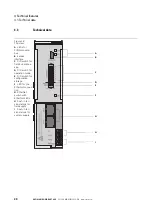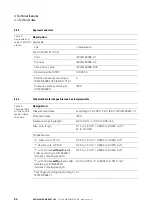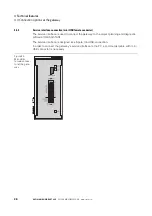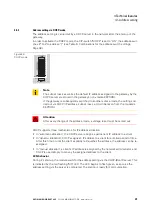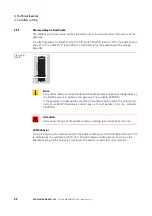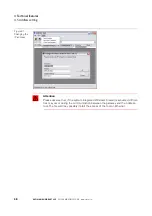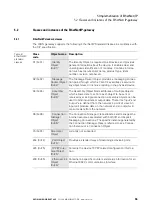
4 Technical features
4.5 Address setting
XI/ON: XNE-GWBR-2ETH-IP
09/2011 MN05002007Z-EN
www.eaton.com
41
4.5.4
Address setting via DHCP-mode
The address setting is carried out by a DHCP-server in the network after the start-up of the
gateway.
In order to activate the DHCP-mode, the DIP-switch "MODE" is set to "ON", the address-swit-
ches 2
0
to 2
7
to address "1" (see Table 6: Combinations for the address-switch settings,
DHCP supports three mechanisms for IP address allocation:
• In "automatic allocation", the DHCP-server assigns a permanent IP address to a client.
• In "dynamic allocation", DHCP assigns an IP address to a client for a limited period of time.
After this time or until the client explicitly relinquishes the address, the address can be re-
assigned.
• In "manual allocation", a client's IP address is assigned by the network administrator, and
DHCP is used simply to convey the assigned address to the client.
LED-behavior
During it’s start-up, the module waits for the address setting via the DHCP-/BootP-server. This
is indicated by the red flashing "MS" LED. The LED begins to flash green, as soon as the
address setting via the server is completed. The station is ready for communication.
Figure 25:
DHCP-mode
Note
The subnet mask as well as the default IP address assigned to the gateway by the
DHCP-server are stored in the gateway’s non-volatile EEPROM.
If the gateway is subsequently switched to another adress-mode, the settings car-
ried out via DHCP (IP address, subnet mask, etc) will be taken from the module’s
EEPROM.
Attention
After every change of the address-mode, a voltage reset must be carried out.




